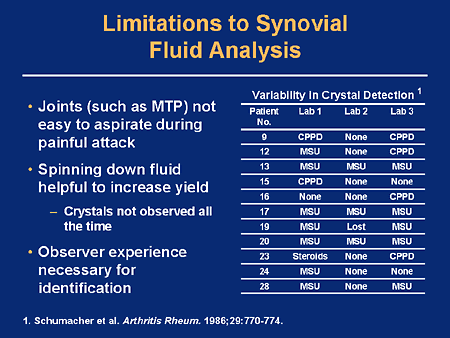
The diagnosis of septic arthritis primarily relies on patient clinical presentation and synovial fluid analysis of the affected joint. A flowchart was created to summarize the findings of our review, so that physicians may reference this visual in making the appropriate diagnosis when the commonly held standards of cell count, gram stain, and culture aren’t enough to make the diagnosis. Three tests had a negative likelihood ratio < 0.1, indicating that they may help to rule out septic arthritis. Eight tests had a positive likelihood ratio of ≥10. Three of those diagnostic tests had specificity and sensitivity greater than 80%. There were 26 different diagnostics tests used across the 15 papers included for review. All 15 papers were of high quality methodology as determined by the QUADAS tool. After applying inclusion and exclusion criteria to the initial search, 15 papers total were included for analysis. The Quality Assessment of Diagnostic Accuracy Studies (QUADAS) tool was used by two independent reviewers to determine study quality and risk of bias. We cross referenced this search with searches of additional databases (including Cochrane Library and Scopus) to confirm similar search results.


A search of PubMed and CINAHL databases was performed to identify studies that compared results diagnostic tests for septic arthritis.

The aim of this study was to review the last decade’s literature on the diagnosis of septic arthritis of the native joint in adults and summarize that data in an easy to follow algorithm to clarify how the last decade’s data may be applied to the diagnosis of septic arthritis. While septic arthritis can be a straightforward diagnosis, there are many cases when the diagnosis is difficult to make.


 0 kommentar(er)
0 kommentar(er)
